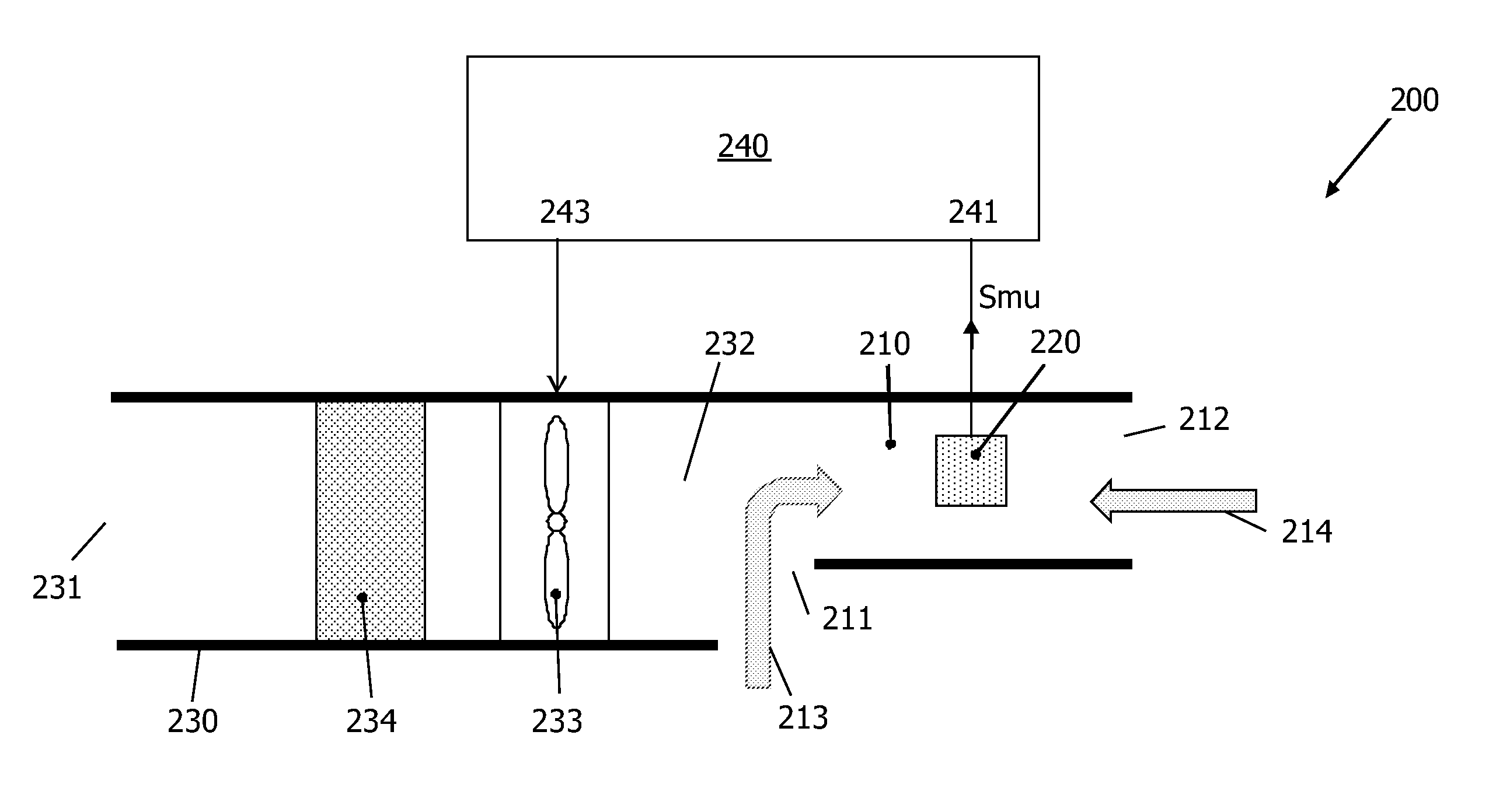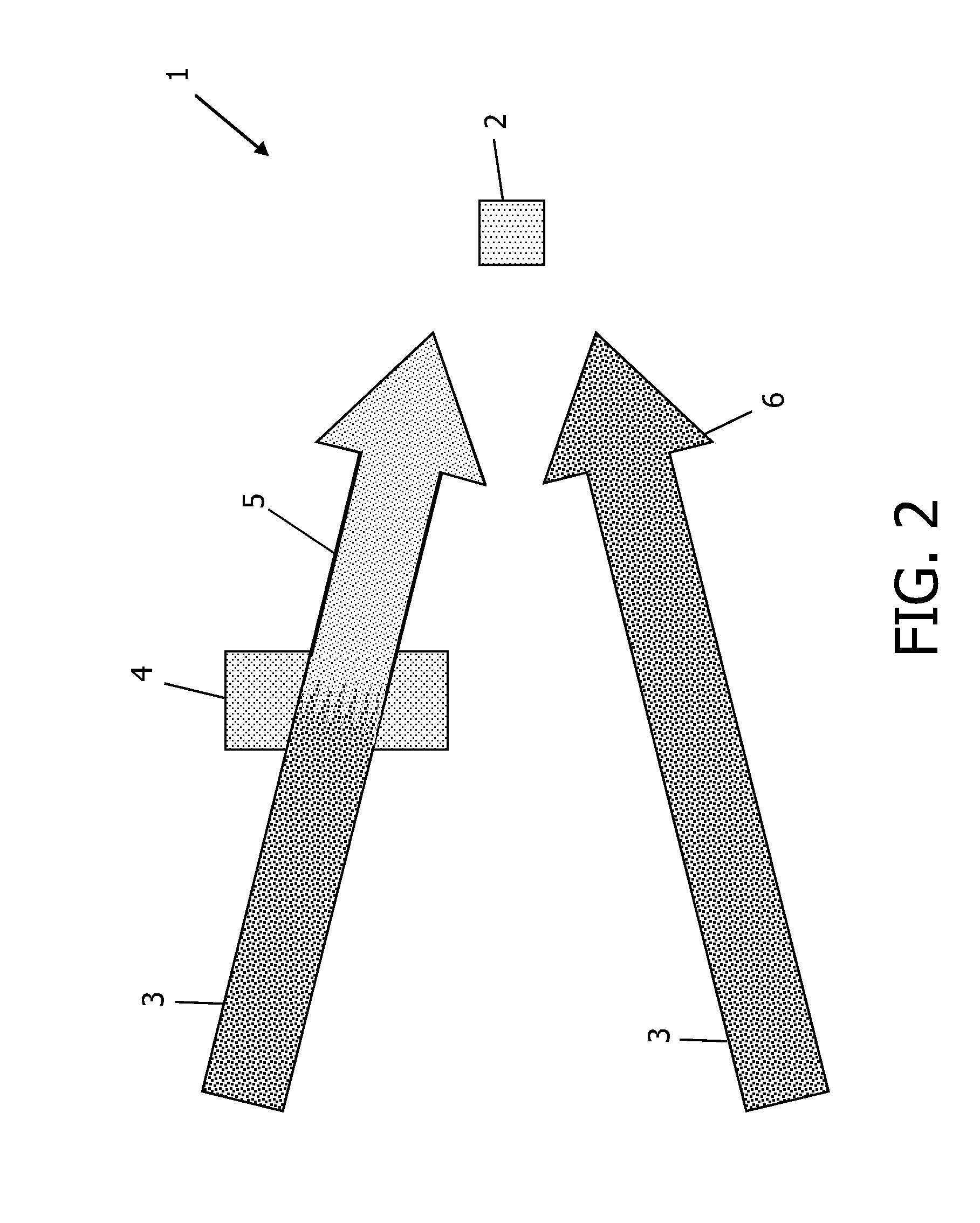Gas sensing apapratus
a technology of gas sensing and sensors, applied in the field of gas sensors, can solve the problems of air being considered unacceptably polluted with a certain target gas, no sensors or sensor technologies that meet all the above requirements, and severe application problems
- Summary
- Abstract
- Description
- Claims
- Application Information
AI Technical Summary
Benefits of technology
Problems solved by technology
Method used
Image
Examples
first embodiment
[0035]a gas sensing apparatus according to the present invention is generally indicated by reference numeral 200 and is schematically illustrated in FIGS. 3A and 3B. The gas sensing apparatus 200 comprises a measuring chamber 210 and a gas sensor 220 arranged in the measuring chamber 210.
[0036]The measuring chamber 210 has at least one passageway 211 allowing direct entry of ambient air and allowing this ambient air to reach the measuring chamber 210 unfiltered. In the embodiment shown, there are two different passageways 211, 212 connecting the measuring chamber 210 to the ambient environment such as to allow for convection.
[0037]The gas sensing apparatus 200 further comprises an air duct 230 having an entrance 231 communicating with the ambient environment and an output 232 communicating with the measuring chamber 210. The gas sensing apparatus 200 further comprises a gas filter 234 and a controllable airflow generating means 233, for instance a ventilator, arranged in the air duc...
embodiment 300
[0054]The six ducts 610-660 together define three pairs of ducts 610, 640; 620, 650; 630, 660. The ducts of each pair are arranged in such a way that their respective second openings 612, 642; 622, 652; 632, 662 are located on opposite sides of the measuring chamber 210. The control device is designed such as to selectively operate one of said pairs of ducts, with the other pairs being out of operation. Then, such a selected pair of ducts behaves like the embodiment 300 discussed with reference to FIG. 5. FIG. 8 illustrates this for the ducts 610 and 640: by appropriate control of the corresponding ventilators 614, 644, ambient air flows from opening 611 via measuring chamber 210 towards opening 641, as shown by arrows, or in the opposite direction, so the sensor 220 is exposed to air selectively filtered by either filter 613 or filter 643, respectively. Likewise, the ducts 620 and 650 form an associated pair: by appropriate control of the corresponding ventilators 624, 654, ambient...
PUM
 Login to View More
Login to View More Abstract
Description
Claims
Application Information
 Login to View More
Login to View More - R&D
- Intellectual Property
- Life Sciences
- Materials
- Tech Scout
- Unparalleled Data Quality
- Higher Quality Content
- 60% Fewer Hallucinations
Browse by: Latest US Patents, China's latest patents, Technical Efficacy Thesaurus, Application Domain, Technology Topic, Popular Technical Reports.
© 2025 PatSnap. All rights reserved.Legal|Privacy policy|Modern Slavery Act Transparency Statement|Sitemap|About US| Contact US: help@patsnap.com



